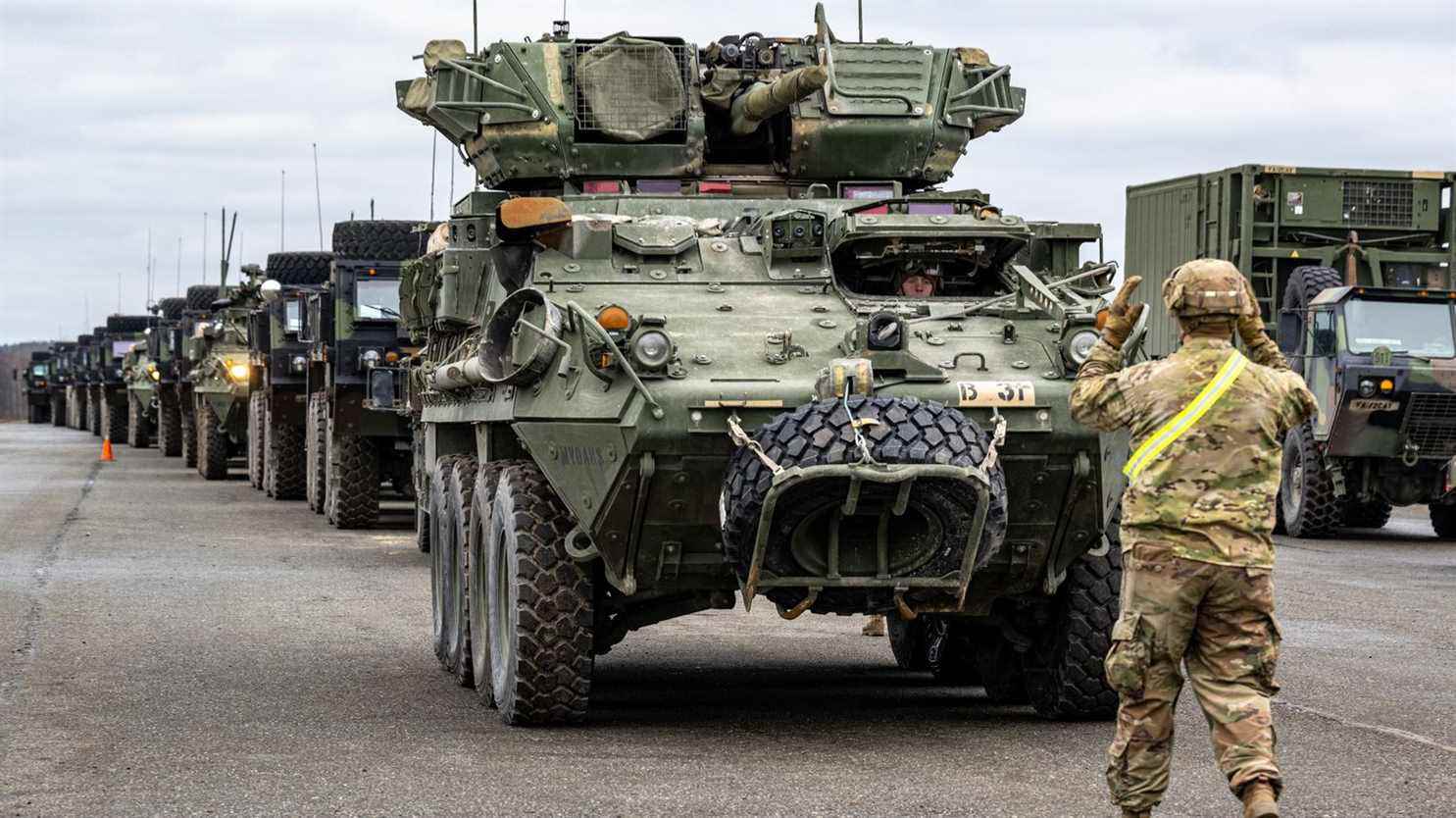The President of the United States, Joe Biden, ordered on February 2 the dispatch of 3,000 additional soldiers to reinforce the military contingents of NATO member countries, such as Poland or Romania, worried about tensions between Russia and Ukraine.
Some of these units were transferred from the United States, others from Germany where American forces are permanently positioned. This is the case at the Vilseck base in Bavaria, from where several hundred soldiers are preparing to leave for Romania.
Two impressive columns, formed by trucks and armored vehicles parked one behind the other, ready to depart. How many are they ? “At least 200”answers an American officer in charge of communication, who also remains voluntarily vague on the exact number of men, “700 to 800”. What matters is the show of force.
These men, Colonel Joseph Ewers is proud of: “Behind me and around us, you can see these words translated into action!” It was he who commanded the 2nd Cavalry Regiment of the American army in Vilseck. “Those soldiers are the centerpiece of this incredible joint-service team and their proud members of the Alliancehe boasts. From their forward post in Romania, our soldiers will work closely with the forces of our host country. Together they will conduct challenging and realistic workouts. We will be by their side for as long as they want.”
This regiment is a light and rapidly deployable force, often called “dragons” or “Strykers”, from the name of their emblematic vehicle, an armored tank mounted on 8 wheels, whose models present in Europe were the first within the American army to be modernized.
They are equipped with a much more powerful cannon following the previous conflict between the Russia and Ukraine. This is enough to reassure the allies, according to Colonel Joseph Ewers.
“The purpose of this mission is to strengthen NATO and strengthen the eastern flank of the alliance.”
The emblem of his regiment is a fleur-de-lis, and on the shoulders of the soldiers, and their insignia, the motto is well written in French. We can read “Always ready”: a legacy of their commitment a century ago during the First World War in France on the front line.

A regiment indeed “always ready” and today on the verge of joining the Romanian coast of the Black Sea 1,800 kilometers from their German base.
When announcing the movement of American troops, Pentagon spokesman John Kirby insisted on the temporary nature of these deployments. On the French side, Foreign Minister Jean-Yves le Drian considers that NATO’s dispatch of military reinforcements to Romania does not constitute a provocation against Russia.
